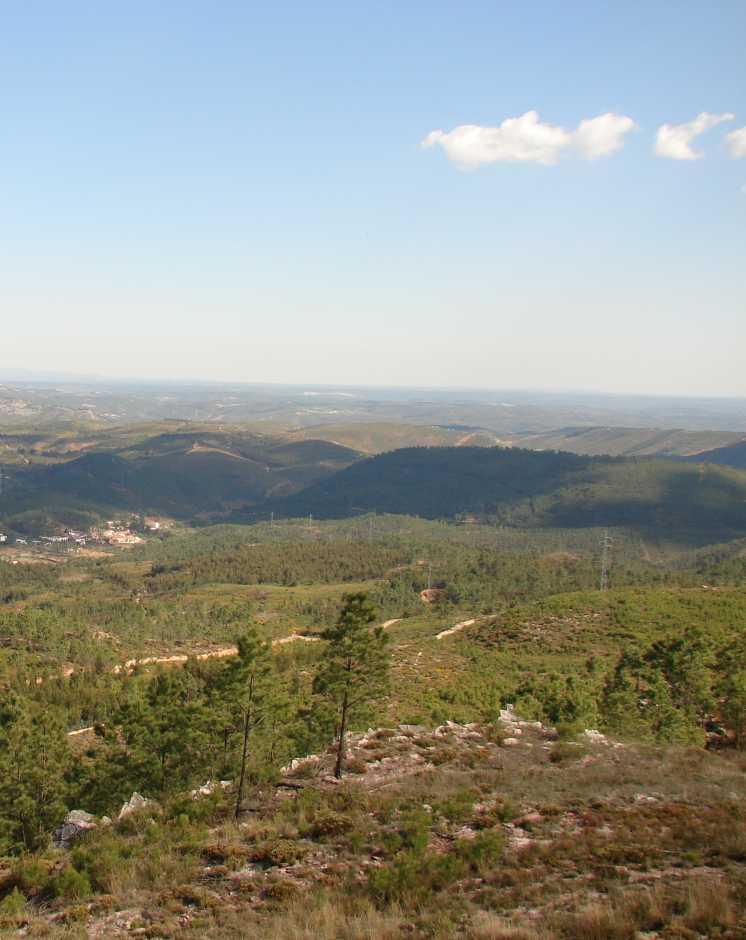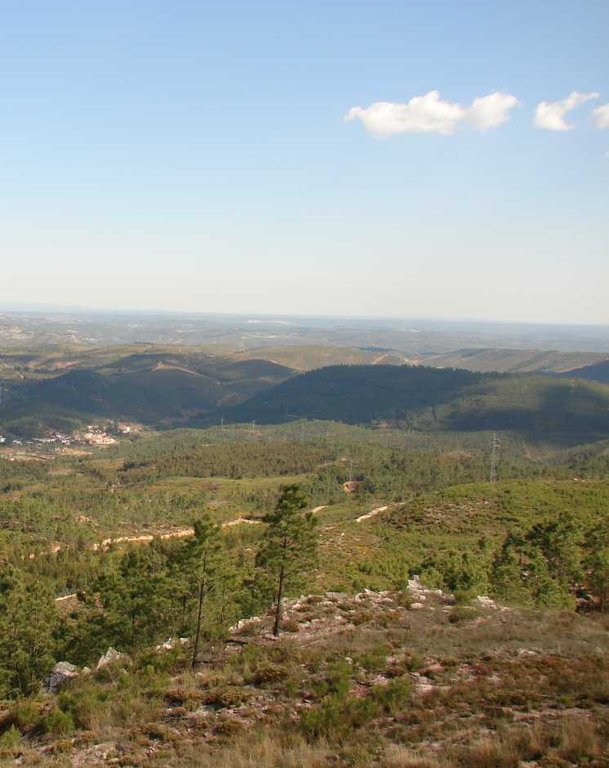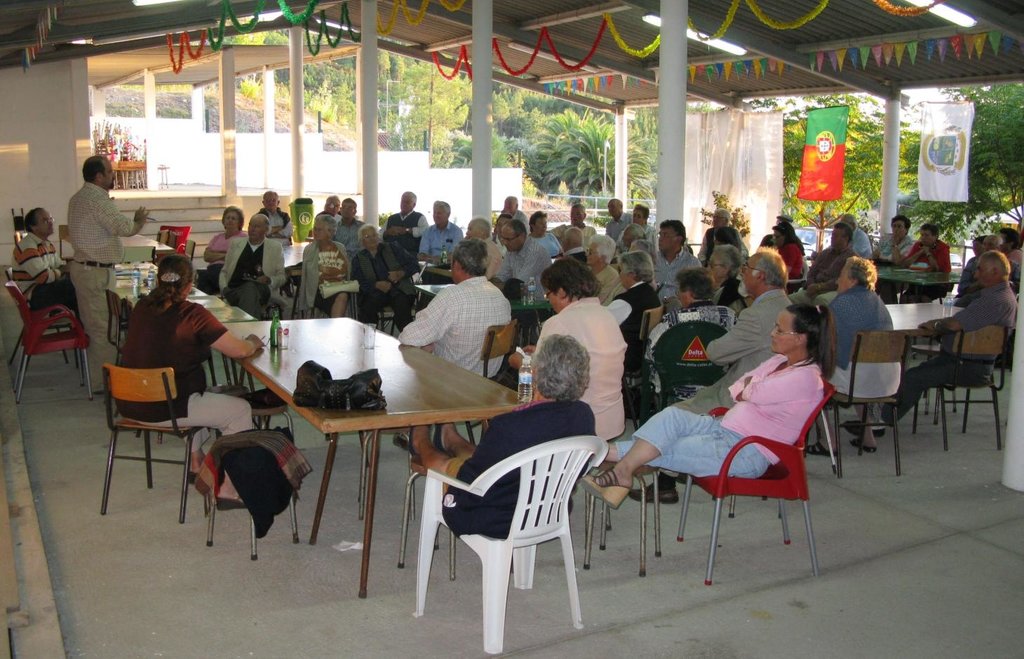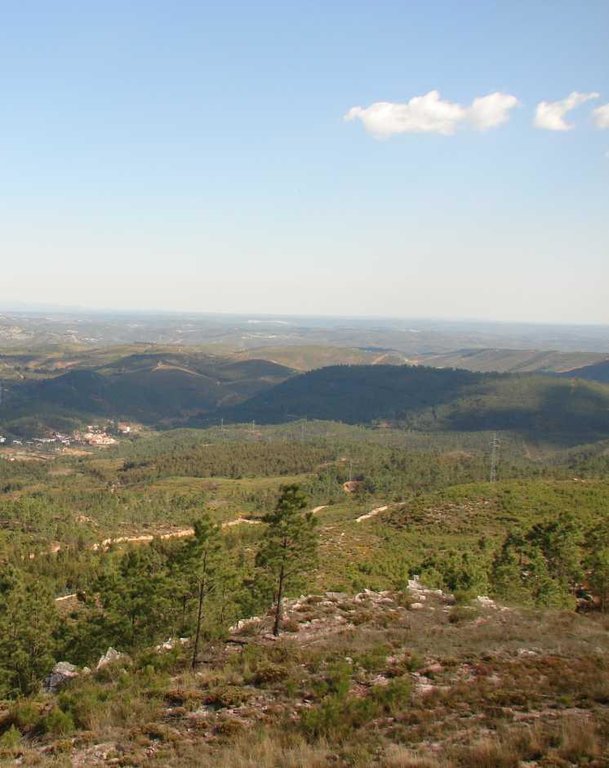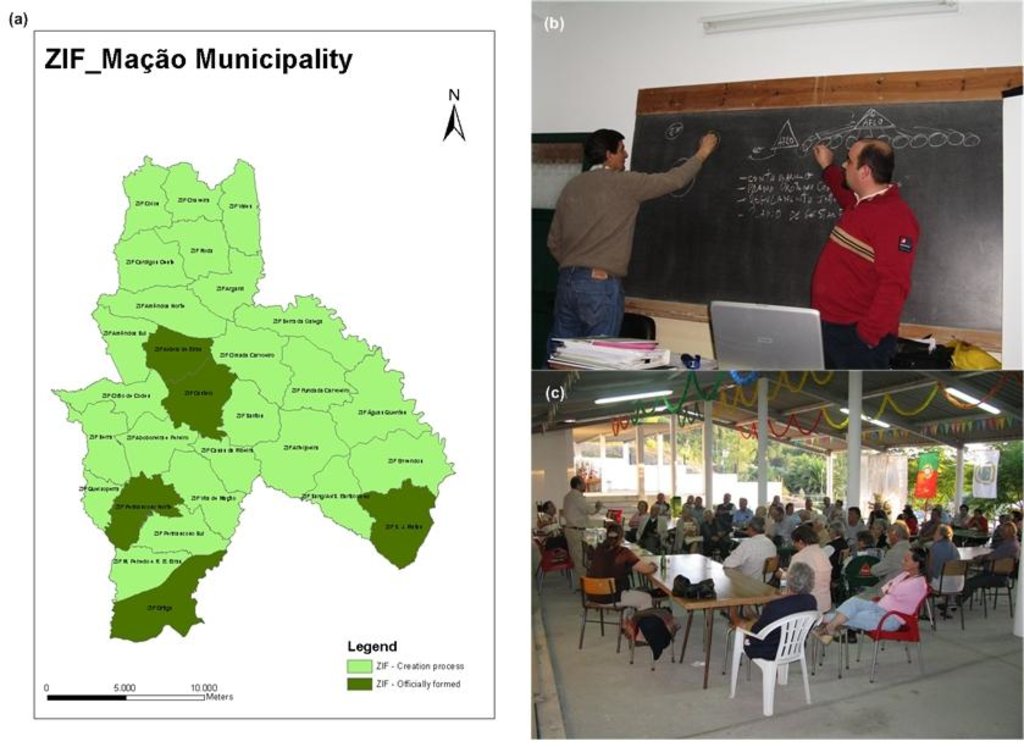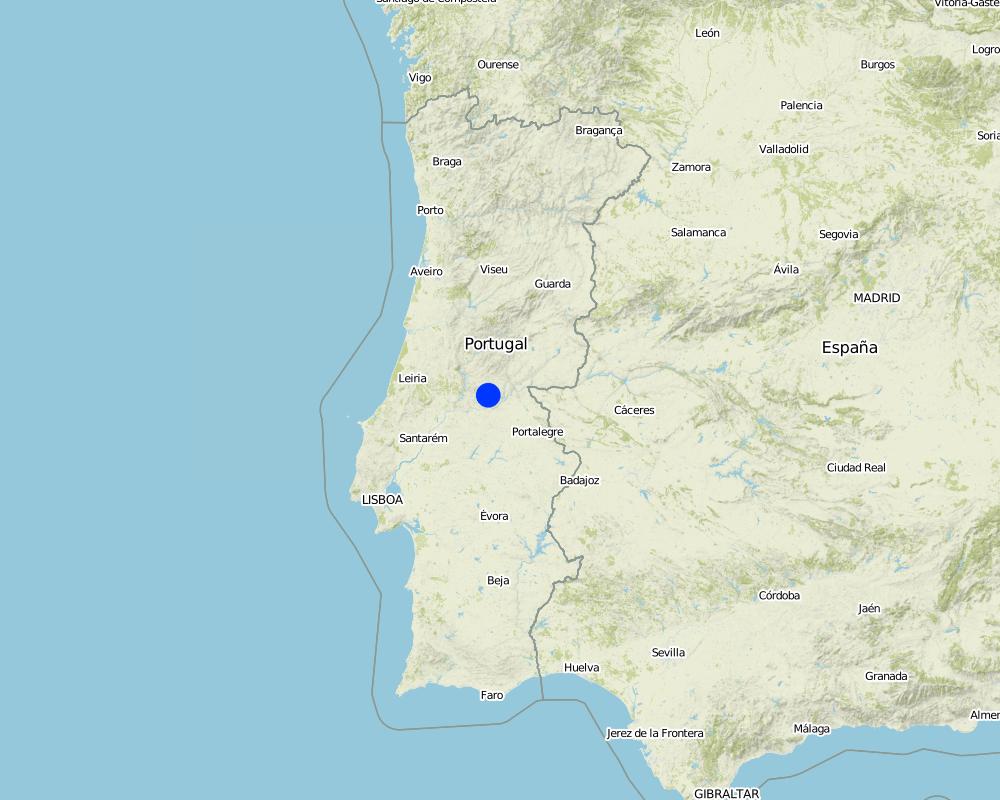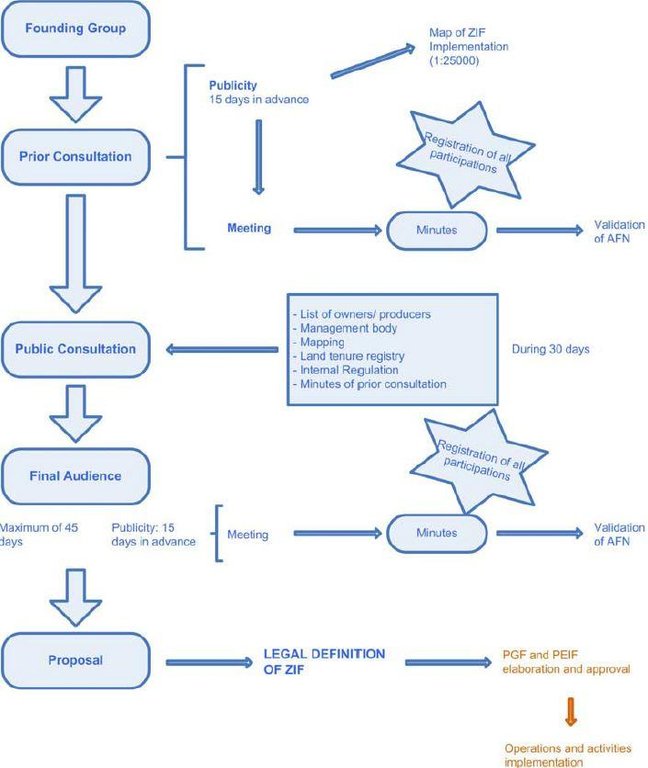Forest Intervention Area (ZIF) [Portugal]
- Creación:
- Actualización:
- Compilador: Celeste Coelho
- Editor: –
- Revisores: Fabian Ottiger, Deborah Niggli
Zona de Intervenção Florestal (Portuguese)
approaches_2588 - Portugal
Visualizar secciones
Expandir todo Colapsar todos1. Información general
1.2 Detalles de contacto de las personas de referencia e instituciones involucradas en la evaluación y la documentación del Enfoque
Especialista MST:
Nombre del proyecto que facilitó la documentación/ evaluación del Enfoque (si fuera relevante)
DESIRE (EU-DES!RE)Nombre de la(s) institución(es) que facilitaron la documentación/ evaluación del Enfoque si fuera relevante)
University of Aveiro (University of Aveiro) - Portugal1.3 Condiciones referidas al uso de datos documentados mediante WOCAT
¿Cuándo se compilaron los datos (en el campo)?
10/02/2009
El compilador y la/s persona(s) de referencia claves aceptan las condiciones acerca del uso de los datos documentados mediante WOCAT :
Sí
1.4 Referencia/s al/los Cuestionario(s) de Tecnologías MST
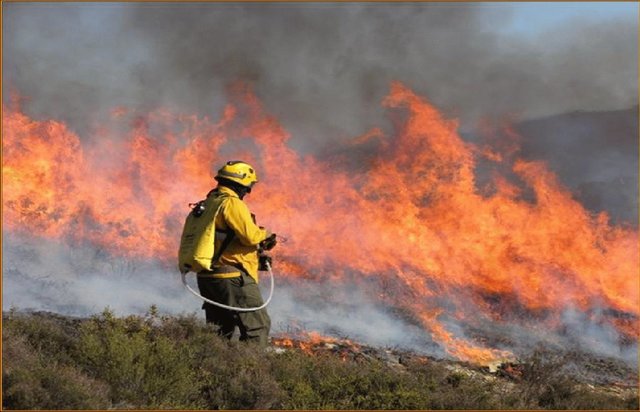
Prescribed fire [Portugal]
Use of prescribed fire (or ‘controlled burn’) to reduce the fuel load in the form of live and dead plant material and thus to prevent the likelihood of more damaging wildfire.
- Compilador: Manuela Carreiras
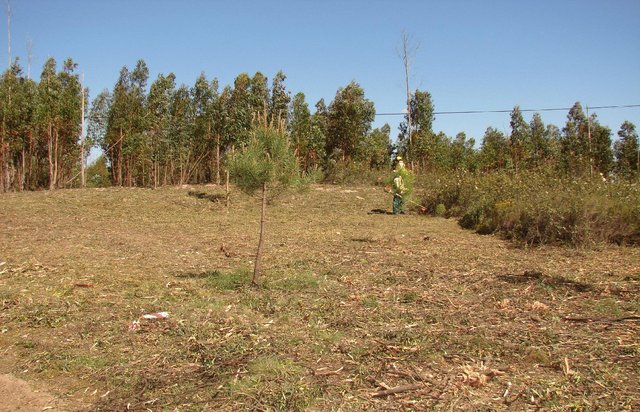
Primary strip network system for fuel management [Portugal]
Linear strips are strategically located in areas where total or partial removal of the forest biomass is possible. This technology contributes towards preventing the occurrence and spread of large forest fires and reducing their consequences for the environment, people, infrastructures, etc.
- Compilador: Celeste Coelho
2. Descripción del Enfoque MST
2.1 Breve descripción del Enfoque
Forest Intervention Area (ZIF) is a territorial unit, where the main land use is forestry. This approach assembles and organizes small forest holders and defines a joint intervention for forest management and protection. Defined by law in 2005, and revised in 2009, each ZIF of private forest has to include at least a contiguous area of 750 ha, 50 landowners and 100 forest plots, and has to be managed by a single body, defined by ZIF members.
2.2 Descripción detallada del Enfoque MST
Descripción detallada del Enfoque MST:
Aims / objectives: The ZIF overall objective is to promote the efficient management of forest and to mitigate current constraints of forest intervention (e.g. land size and tenure). Other objectives are to develop structural measures for fire prevention, to integrate local and central administration actions and to implement the national and regional forest management policy at the local level. The final purpose of ZIF areas is to improve productivity in rural forest areas, contributing to rural development
Methods: The idea emerged after the catastrophic wildfires of 2003 and was developed and presented by a group of stakeholders (landowners, forest associations, City Council, among others) to the Ministry of Agriculture, Rural Development and Fisheries. The ZIF approach was legislated by Law 127/2005, and revised under Law 15/2009. Each ZIF assembles small properties, which will be jointly managed by a single entity, which can be a non-profit-making and voluntary organization or some other group of people approved by the forest owners. Each ZIF will have a Forest Management Plan (PGF), where the forestry operations and activities for ZIF area are defined accordingly to the guidelines of the Regional Plan for Forestry Management and Planning (PROF), and a Specific Plan to Forest Protection (PEIF), which includes actions to protect forest against biotic and abiotic risks. The management entity should have a team with qualifications and experience in forestry and with technical ability to design these plans.
Stages of implementation: The legal constitution of ZIF includes six mandatory steps, namely the constitution of the founding group (group of landowners with at least 5% of a continuous area inside the ZIF), the prior consultation meeting, the public consultation, the final audience meeting, the proposal submission to the National Forest Authority (AFN) and legal publication of each ZIF (already done). After these procedures, the PGF and PEIF of each ZIF will be designed by the management entity and evaluated and approved by AFN. The implementation activities can then be implemented by the management entity or by individual landowners following the rules described on the plans. PEIF validity is five years and PGF validity is 25 years (still in preparation). [See figure below].
Role of stakeholders: The founding group is mainly composed of forest owners and producers and is the starting point for creating a ZIF. The management entity administers the ZIF in order to achieve their main purposes and the aims defined on the plans. AFN will support and monitor ZIF activities. ZIF non-supporting landowners are obliged to have a PGF for their land, as well as to accomplish the PEIF of the ZIF.
Other important information: The landowners inside the ZIF who are non-supporters do not have a clear role. Based on PROF - Plano Regional de Ordenamento Florestal (Regional Plan for Forestry Management and Planning), for ownerships of > 25 ha, the owners are obliged to have a PGF - Plano de Gestão Florestal (Plan for Forestry Management) for their property.
2.3 Fotos del Enfoque
2.5 País/ región/ lugares donde el Enfoque fue aplicado
País:
Portugal
Región/ Estado/ Provincia:
Santarém
Especifique más el lugar :
Mação
Map
×2.6 Fechas de inicio y conclusión del Enfoque
Indique año del inicio:
2003
2.7 Tipo de Enfoque
- proyecto/ basado en un programa
2.8 Propósitos/ objetivos principales del Enfoque
The Approach focused mainly on other activities than SLM (The main objective is to increase land management and profitability)
- To promote the sustainable management of forest; - To coordinate the protection of forest and natural areas; - To reduce the conditions to fire ignition and spread; - To coordinate the recovery of forest and natural areas affected by forest fires; - To give territorial coherence and effectiveness to the action of local administration and others actors.
The SLM Approach addressed the following problems: - lack of forest planning and management, forest fires, land structure and tenure, land abandonment, rural depopulation and ageing.
2.9 Condiciones que facilitan o impiden la implementación de la/s Tecnología/s aplicadas bajo el Enfoque
normas y valores sociales/ culturales/ religiosos
- impiden
Social resistance to this approach. Landowners fear to lose tenure rights. Difficult to reach and find owners due to inheritance and out-migration. Rural depopulation occurred in the last decades.
Treatment through the SLM Approach: Financial support, creation of new job opportunities in rural areas.
disponibilidad/ acceso a recursos y servicios financieros
- impiden
High implementation cost.
Treatment through the SLM Approach: Governmental incentives
entorno institucional
- impiden
Scepticism about the practical effects of this approach. Very high costs for implementation and lack of private investment
Treatment through the SLM Approach: ZIF pilot areas will motivate implementation and investment into other ZIFs.
marco de trabajo legal (tenencia de tierra, derechos de uso de tierra y agua)
- impiden
Land structure and tenure (private holdings)
Treatment through the SLM Approach: Minimum area to constitute a ZIF is 750 ha
The existing land ownership, land use rights / water rights greatly hindered the approach implementation The ZIF join small properties and their management is undertaken as a single property, guide by a forest management plan. This entity can be a non-profit and voluntary organization or an other group of people approved by the forest owners and/or producers.
3. Participación y roles de las partes interesadas involucradas
3.1 Partes interesadas involucradas en el Enfoque y sus roles
- usuarios locales de tierras/ comunidades locales
Gender: mixed, Age: 50 years old
The majority of forest owners are usually pensioners, with low incomes
- especialistas MST/consejeros agrícolas
AFLOMAÇÃO technicians
- sector privado
Private organizations
- gobierno local
- gobierno nacional (planificadores, autoridades)
Municipality
Si varias partes interesadas estuvieron involucradas, indique la agencia principal:
Based on an initial idea from Mação local specialists; the national ZIF legislation emerged in 2005 and was revised in 2009
3.2 Involucramiento de los usuarios locales de tierras/ comunidades locales en las distintas fases del Enfoque
| Involucramiento de los usuarios locales de tierras/ comunidades locales | Especifique quién se involucró y describa las actividades | |
|---|---|---|
| iniciación/ motivación | interactivo | Balance alternatives and take decision to test the agave forestry information sessions about ZIF approach; informal contacts, door-to-door approaches and formal agreement of the landowners to become ZIF members. |
| planificación | pasivo | information sessions to present the ZIF plans (PGF and PEIF). |
| implementación | interactivo | management activities can be made by the land owners or by the ZIF management entity. Regular meetings with ZIF members |
| monitoreo y evaluación | interactivo | not defined yet |
| Research | interactivo | on-farm research, good practice demonstration and collaboration with research projects. |
3.3 Flujograma (si estuviera disponible)
Descripción:
Legal process related with the ZIF constitution (blue)
Elaboration and approval of the ZIF plans (orange)
Implementation of the plans (orange)
3.4 La toma de decisiones en la selección de Tecnología(s) MST
Especifique quién decidió la selección de las Tecnología/ Tecnologías a implementarse:
- principalmente por especialistas MST en consulta con usuarios de tierras
Explique:
Users’ perceptions and expectations were also considered.
Decisions on the method of implementing the SLM Technology were made by by SLM specialists alone (top-down)
4. Apoyo técnico, fortalecimiento institucional y gestión del conocimiento
4.1 Construcción de capacidades / capacitación
¿Se proporcionó la capacitación a usuarios de tierras/ otras partes interesadas?
Sí
- opinion leaders
Temas avanzados:
information sessions and individual contacts with opinion leaders
4.2 Servicio de asesoría
¿Los usuarios de tierras tienen acceso a un servicio de asesoría?
Sí
Describa/ comentarios:
Name of method used for advisory service: Information sessions; Key elements: ZIF process, Explaining rational of ZIF for specific municipality and its conditions like depopulation, forest fires, etc, Elaboration of the ZIF plans; The extension system is well set up to ensure follow-up activities
Advisory service is very adequate to ensure the continuation of land conservation activities
4.3 Fortalecimiento institucional (desarrollo institucional)
¿Se establecieron o fortalecieron instituciones mediante el Enfoque?
- sí, mucho
Especifique el nivel o los niveles en los que se fortalecieron o establecieron las instituciones:
- local
Proporcione detalles adicionales:
City council supports the forest association activities.
4.4 Monitoreo y evaluación
Comentarios:
There were None changes in the Approach as a result of monitoring and evaluation: (* The monitoring procedures are not structured yet)
4.5 Investigación
¿La investigación formó parte del Enfoque?
Sí
Especifique los temas:
- sociología
- economía/ marketing
- ecología
- forestry, politics
Proporcione detalles adicionales e indique quién hizo la investigación:
The approach includes technical and local knowledge. The idea was prepared and presented by a group of stakeholders (landowners, forest associations, among others) to the Ministry of Agriculture, Rural Development and Fisheries and legislated by the Law n. º 127/2005, 5 August.
Research was carried out both on station and on-farm
5. Financiamiento y apoyo material externo
5.1 Presupuesto anual para el componente MST del Enfoque
Si no se conoce el presupuesto anual preciso, indique el rango:
- > 1,000,000
Comentarios (ej. fuentes principales de financiamiento/ donantes principales):
Approach costs were met by the following donors: government (Permanent Forest Fund): 100.0%; local community / land user(s) (ZIF implementation activities: National Strategic Reference Framework (60%), Land users (40%))
5.2 Apoyo financiero/material proporcionado a los usuarios de tierras
¿Los usuarios de tierras recibieron financiamiento/ apoyo material para implementar la Tecnología/ Tecnologías? :
Sí
5.3 Subsidios para insumos específicos (incluyendo mano de obra)
- equipo
| Especifique qué insumos se subsidiaron | En qué grado | Especifique los subsidios |
|---|---|---|
| Printer, toners, map production | totalmente financiado | |
Si la mano de obra de usuarios de tierras fue un insumo sustancial, ¿fue:
- voluntario?
Comentarios:
Landowners can work on their properties or can be substituted by the ZIF management entity. Some activities, such as the implementation of the Primary Strips Network System for Fuel Management can be supported by the municipality services.
1-technical, fully financed (FFP).2- preparation of PGF,partly financed. 3-implementation,partly financed.
6. Análisis de impacto y comentarios de conclusión
6.1 Impactos del Enfoque
¿El Enfoque ayudó a los usuarios de tierras a implementar y mantener Tecnologías MST?
- No
- Sí, un poco
- Sí, moderadamente
- Sí, mucho
Reduction of the number and likelihood of forest fires.
¿El Enfoque empoderó a grupos en desventaja social y económica?
- No
- Sí, un poco
- Sí, moderadamente
- Sí, mucho
It is expected that the increase in land productivity through the implemented technologies will help to improve the socio-economic situation of these rural groups.
¿El Enfoque mejoró cuestiones de tenencia de tierra/ derechos de usuarios que obstaculizaron la implementación de la Tecnologías MST?
- No
- Sí, un poco
- Sí, moderadamente
- Sí, mucho
Did other land users / projects adopt the Approach?
- No
- Sí, un poco
- Sí, moderadamente
- Sí, mucho
The initial social resistance to the approach will diminish through the existence of a successful ZIF.
Did the Approach lead to improved livelihoods / human well-being?
- No
- Sí, un poco
- Sí, moderadamente
- Sí, mucho
Did the Approach help to alleviate poverty?
- No
- Sí, un poco
- Sí, moderadamente
- Sí, mucho
It is expected that the implementation of this approach will contribute to the improvement of rural socio-economic conditions through productivity increase, creation of employment and promotion of local products.
6.2 Motivación principal del usuario de la tierra para implementar MST
- reglas y reglamentos (multas)/ aplicación
- afiliación al movimiento/ proyecto/ grupo/ redes
- aesthetic
- forest fires
6.3 Sostenibilidad de las actividades del Enfoque
¿Pueden los usuarios de tierras sostener lo que se implementó mediante el Enfoque (sin apoyo externo)?
- no
Si respondió no o incierto, especifique y comente:
The forest owners do not have the financial capacity to apply and support these activities by themselves.
6.4 Fortalezas/ ventajas del Enfoque
| Fuerzas/ ventajas/ oportunidades desde la perspectiva del compilador o de otra persona de referencia clave |
|---|
| Social conscience (How to sustain/ enhance this strength: through awareness campaigns and information sessions provided at national and local level.) |
| Prevention of forest fires (How to sustain/ enhance this strength: the increase of forest management will contribute to the decrease of large forest fires. The implementation of integrated and global measures to fire prevention will be suitable within the ZIF approach.) |
| Restoration of burnt areas (How to sustain/ enhance this strength: The use of forest species to enable the protection and recovery of degraded soils or soils with high erosion risk has a very positive influence on the rehabilitation of burnt areas. However, many of these species are not economically attractive at short or medium term. The management of the land using ZIF model will allow the definition of the most affected areas for an urgent intervention.) |
| Increase productivity (How to sustain/ enhance this strength: present land tenure and structure of forest holdings constitute a bottleneck for forest productivity. The integrated management of the ZIF will allow a better management and use of the land, increasing the exploitation of timber and non-timber products and also increasing the resilience to wildfires.) |
| Improve forest management (How to sustain/ enhance this strength: promotion of the planting of more fire-resilient species which are better adapted to the local conditions. AFN should: (i) provide information about the guidelines; (ii) develop new policies and tools, which are more suitable to the local level; (iii) support and implement public awareness campaigns about forest values and services, and (iv) provide financial support to ZIF constitution and implementation activities.) |
6.5 Debilidades/ desventajas del Enfoque y formas de sobreponerse a ellos
| Debilidades/ desventajas/ riesgos desde la perspectiva del compilador o de otra persona de referencia clave | ¿Cómo sobreponerse a ellas? |
|---|---|
| Unattractive investment (low public support and lack of private support) | the need to review and reform the existing QREN or provide others means of support. Incentives to private initiative or donors should be found. |
| Highly bureaucratic nature of the ZIF approach | simplification of the bureaucratic process |
| Rather complex process: unclear role for the non-adherent landowners within the ZIF; ZIF has to follow many laws and plans; control and monitoring activities still not defined | clarification and simplification of the bureaucratic process of the ZIF |
| Costs related to the approach | major financial support from the government needs to be provided. |
7. Referencias y vínculos
7.1 Métodos/ fuentes de información
- visitas de campo, encuestas de campo
- entrevistas con usuarios de tierras
7.2 Referencias a publicaciones disponibles
Título, autor, año, ISBN:
Decree- Law 127/2005, 5 August. Official Gazette n. 150 - I series A.: 4521-4527Decree-Law 15/2009, 14 January. Official Gazette n. 9 - I series: 254-267AFN (2011). Caracterização das Zonas de Intervenção Florestal. Lisboa, Autoridade Florestal Nacional: 54
Vínculos y módulos
Expandir todo Colapsar todosVínculos

Prescribed fire [Portugal]
Use of prescribed fire (or ‘controlled burn’) to reduce the fuel load in the form of live and dead plant material and thus to prevent the likelihood of more damaging wildfire.
- Compilador: Manuela Carreiras

Primary strip network system for fuel management [Portugal]
Linear strips are strategically located in areas where total or partial removal of the forest biomass is possible. This technology contributes towards preventing the occurrence and spread of large forest fires and reducing their consequences for the environment, people, infrastructures, etc.
- Compilador: Celeste Coelho
Módulos
No se hallaron módulos


